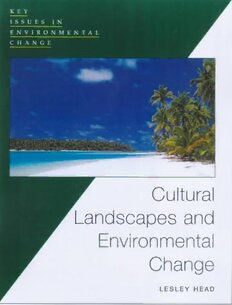
Cultural Landscapes and Environmental Changes (Key Issues in Environmental Change) PDF
205 Pages·2001·17.649 MB·English
Most books are stored in the elastic cloud where traffic is expensive. For this reason, we have a limit on daily download.
Preview Cultural Landscapes and Environmental Changes (Key Issues in Environmental Change)
Description:
Cultural landscapes are usually understood within physical geography as ones transformed by human action. Advances in palaeocological reconstruction techniques have increased our powers to discern the earliest human impacts. This stimulating new book attempts to bridge the gap between the sciences and the humanities by reviewing the most important methodological and conceptual tools that help environmental scientists understand cultural landscapes.
See more
The list of books you might like
Most books are stored in the elastic cloud where traffic is expensive. For this reason, we have a limit on daily download.
